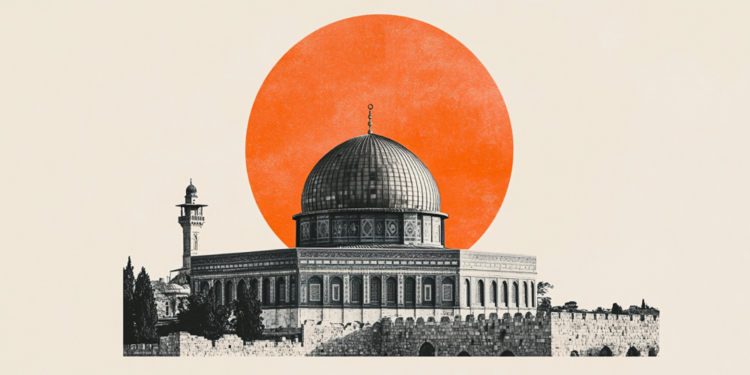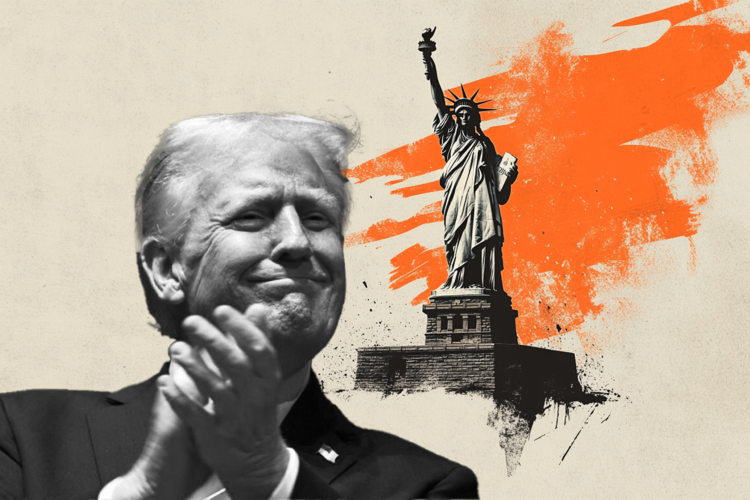The most cited book of recent years, that is the Treaty Of war of the Prussian general Carl von Clausewitz, he claims – as known – that War is the continuation of politics by other means. This means that the war must also be analyzed as if it were a policy like the others, with certain purposes and certain means to reach them: but what do Israel, Iran and the United States want in this new war that is fought in the Middle East but is global? And what can the future developments be?
Let’s try to apply the cold approach of the military theorist von Clausewitz without considering, but only for analytical clarity, dead, injured, destruction, terror.
Iran
The Iran of the Ayatollah is a regime that has been holding up on 1979 A mixture of internal repression and attachments outside – Sometimes real wars as with Iraq in 1980, more often as a sponsor of terrorism – who have target especially Israel or the United States, the great ideological enemies of Shiite theocracy, rival, in the area, of the other Sunni religious center, Saudi Arabia.
The nuclear program He dates back to 1957 and a collaboration with the United States, who wanted to strengthen the Shah, their ally then in power.
In the last fifteen years, the nuclear program has become a kind of survival guarantee: the Iran that had helped the United States in containing jihadist terrorism, has gradually found itself crushed on other systemic rivals of America, from Russia to China, and experienced i isolation costs Without the benefits of integration in Chinese production chains (Iran mainly exports oil and gas).
In 2015, the Obama administration and the European Union managed to insert that nuclear program in an agreement (JCPOA) which in fact slows down the progress towards the atomic bomb: the Ayatollah save the face but collaborate, and thus obtain less penalties and an effective diplomatic channel.
Donald Trump already in the first term, in 2018, comes out of the agreement and that point the trajectory of the events is defined: Iran knows that only the bomb can avoid the collapse of the regime, therefore the nuclear program accelerates.
With these premises, The regime’s strategy is forced: the myth of the Iranian atomic will have to keep alivewhoever is in power, even if the Ayatollah Ali Khamenei was killed, because otherwise the same raison d’etre of the country would end who consider himself a great regional power. After the attacks on the United States, the regime immediately made it known that the uranium enriched on the Fordow site was rescued.
There are no more spaces for diplomacy, Israel sabotaged the latest negotiations with the attack of 13 Junethe Iranians are no longer credible (they violated the provisions of the UN AIEA Agency) and not even interested.
On the other hand, as evident, Iran does not have the military skills to compete with Israel and less than less with Israel and the United States. For now it is limited to aggressive but conventional actions – missiles, no biological weapons, suicide attacks, or cyber attacks – and with modest results.
Iran is trapped: if it gives up, the regime collapses and it will be up to some military faction to take power and save the salvable. If he really fights without sparing he will make his military fragility clearly, as well as intelligence. If it resists long enough, it can hope to force other countries of the area to give concrete support, but nobody – apart from the Iranians – is willing to die for Tehran.
Israel
Premier Benjamin Netanyahu has long decided to transform the massacre of October 7, 2023 into an opportunity for political rebirth: Only the permanent war can avoid his domestic judicial troubles, the possible arrest from the International Criminal Court for war crimes in Gaza, and the definitive crisis in relations with the White House.
Netanyahu knows that the day when the bombs stop, he is a politically finished man. Unless it becomes the re -founder of a new Israel, free forever from the problem of Palestinians (to be killed, leave to die of hardships or force to escape) and that of the Gulf countries that want to destroy the country: Iran destroyed as proof of strength, Saudi Arabia recovered as a partner.
Netanyahu has already destroyed Hezbollah in Lebanon, has contributed to the fall of Bashar al Assad in Syria, now it’s up to Iran. In this scheme, the medium term does not interest the premier: twenty years ago he supported Hamas’ growth in Gaza to weaken the Palestinian national authority and split the internal Arab front. Today, at 75, Netanyahu has a limited time horizon to worry about: the one useful for not ending up in prison.
Netanyahu’s maximum gamble is that of manipulate the United States, climb over Trump, put it in front of the accomplished factdealing with the most aggressive exponents of the Maga Movement (Make America Great Again) in order to create the premise for the president to join.
The game works only as long as there are military successes to exhibit, Trump likes a lot while civil victims are not interested in it.
United States
Washington has no potential benefit from a war in Iran, a fall of the regime favored by the United States would put the life of soldiers, negotiators, and business people with American passport active in the Middle East at risk.
Trump risks getting an significant piece of his electoral base that hoped for the isolationist president. Above all, the Middle East has nothing to do with the strategies of the United States and NATO: investments in deterrence are all towards indo-transfixing to manage China, the division of tasks with Europe predicts that Europeans are now above all to help Ukrainian against Russia.
There is no money, heads, strategy to think of a new Middle Eastern role in the United States. Still, Trump got back to the Gorgo: he even let him understand that he does not inform himself about the briefing prepared by the American intelligence led by Tulsi Gabbard. So, Trump decides whether to attack Iran and as on the basis of the Israelis reports.
The real risk of this approach is that the Trump administration loses sight of the global consequences of the attack in Tehran: how can this war end so that the United States are satisfied? Is it realistic that Iran sit to treat now, with Trump’s request to effectively cancel the nuclear program? No. And it is not even conceivable that an Iraq -style earth intervention, in a country like Iran huge and with 90 million people, can not be thought to follow the bombings from the sky.
The most probable outcome of Trump’s azarial is that the rivals take advantage of it: Russian President Vladimir Putin has all the interest in presenting himself as a stability guarantorpossible mediator, and to resize his aggression to Ukraine in one of the many theaters of measurement of that logical force without international law to which the United States now also adhere.
Trump is always said to hunt for agreements, of which he would be a teacher: but If you look at the conflict with Israeli lenses, no agreement is possible before the fall of the Ayatollah regimeand if it reacts disproportionately to the Iranian responses, testing the military limits of the Ayatollah and the guards of the revolution, the consequences are unpredictable and on a global scale.
NATO risks being the collateral victim of a phase in which the United States is back to being interveneto be a policeman of the world without more able to afford it. A greater involvement of Trump in the Middle East would make the most solid topic fall to load Europe’s safety costs on Europeans, that is, that America no longer wants to waste resources for conflicts that are not existential for its own survival.
Indeed, Trump may need Europeans – at least by British – to manage chaos around Iran. We are only at the beginning of the chain reaction, and no happy ending is glimpsed.
Source: Vanity Fair
I’m Susan Karen, a professional writer and editor at World Stock Market. I specialize in Entertainment news, writing stories that keep readers informed on all the latest developments in the industry. With over five years of experience in creating engaging content and copywriting for various media outlets, I have grown to become an invaluable asset to any team.







